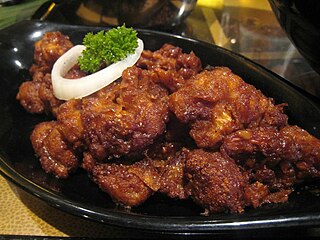
Fusion cuisine is a cuisine that combines elements of different culinary traditions that originate from different countries, regions, or cultures. They can occur naturally and become aspects of culturally relevant cuisines, or they can be part of the post-1970s movement for contemporary restaurant innovations.
An ethnicity or ethnic group is a grouping of people who identify with each other on the basis of perceived shared attributes that distinguish them from other groups. Those attributes can include a common nation of origin, or common sets of ancestry, traditions, language, history, society, religion, or social treatment. The term ethnicity is often used interchangeably with the term nation, particularly in cases of ethnic nationalism.

Desi is a loose term used to describe the Indic people, cultures, and products of the Indian subcontinent and their diaspora, derived from Sanskrit देश (deśá), meaning "land, country". Desi traces its origin to the Indic people of the South Asian republics of India, Pakistan and Bangladesh, and may also sometimes include people from Sri Lanka, Nepal, the Maldives and Bhutan.

Pachucos are male members of a counterculture that emerged in El Paso, Texas, in the late 1930s. Pachucos are associated with zoot suit fashion, jump blues, jazz and swing music, a distinct dialect known as caló, and self-empowerment in rejecting assimilation into Anglo-American society. The pachuco counterculture flourished among Chicano boys and men in the 1940s as a symbol of rebellion, especially in Los Angeles. It spread to women who became known as pachucas and were perceived as unruly, masculine, and un-American. Some pachucos adopted strong attitudes of social defiance, engaging in behavior seen as deviant by white/Anglo-American society, such as marijuana smoking, gang activity, and a turbulent night life. Although concentrated among a relatively small group of Mexican Americans, the pachuco counterculture became iconic among Chicanos and a predecessor for the cholo subculture which emerged among Chicano youth in the 1980s.
The term "person of color" is primarily used to describe any person who is not considered "white". In its current meaning, the term originated in, and is primarily associated with, the United States; however, since the 2010s, it has been adopted elsewhere in the Anglosphere, including relatively limited usage in the United Kingdom, Canada, Australia, Ireland, South Africa, and Singapore.
The phrase fresh off the boat(FOB), off the boat(OTB), are sometimes-derogatory terms used to describe immigrants who have arrived from a foreign nation and have yet to assimilate into the host nation's culture, language, and behavior, but still continue with their ethnic ideas and practices. Within ethnic Asian circles in the United States, the phrase is considered politically incorrect and derogatory. It can also be used to describe the stereotypical behavior of new immigrants as, for example, their poor driving skills, that they are educated yet working low-skilled or unskilled jobs, and their use of broken English. The term originates in the early days of immigration, when people mostly migrated to other countries by ship. "Fresh off the Boeing 707" is sometimes used in the United States as a variation, especially amongst East, South and Southeast Asian immigrants. In the United Kingdom "fresh off the boat" are referred to as freshies or simply FOBs.
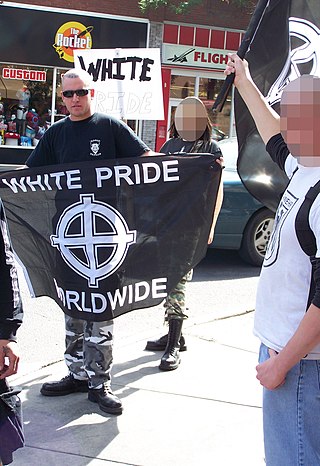
White pride and white power are expressions primarily used by white separatist, white nationalist, fascist, neo-Nazi, and white supremacist organizations in order to signal racist or racialist viewpoints. It is also a slogan used by the prominent post-Ku Klux Klan group Stormfront and a term used to make racist/racialist viewpoints more palatable to the general public who may associate historical abuses with the terms white nationalist, neo-Nazi, and white supremacist.

Greasers are a youth subculture that emerged in the 1950s and early 1960s from predominantly working class and lower-class teenagers and young adults in the United States and Canada. The subculture remained prominent into the mid-1960s and was particularly embraced by certain ethnic groups in urban areas, particularly Italian Americans and Hispanic Americans.

National identity is a person's identity or sense of belonging to one or more states or one or more nations. It is the sense of "a nation as a cohesive whole, as represented by distinctive traditions, culture, and language". National identity may refer to the subjective feeling one shares with a group of people about a nation, regardless of one's legal citizenship status. National identity is viewed in psychological terms as "an awareness of difference", a "feeling and recognition of 'we' and 'they'". National identity also includes the general population and diaspora of multi-ethnic states and societies that have a shared sense of common identity identical to that of a nation while being made up of several component ethnic groups. Hyphenated ethnicities are an example of the confluence of multiple ethnic and national identities within a single person or entity.
Pan-nationalism is a specific term, used mainly in social sciences as a designation for those forms of nationalism that aim to transcend traditional boundaries of basic or historical national identities in order to create a "higher" pan-national (all-inclusive) identity, based on various common denominators. Pan-nationalism can occur as a specific variant of all common forms of nationalism. In relation to classical state nationalism, pan-nationalism manifests itself through various political movements that advocate the formation of "higher" (pan-national) forms of political identity, based on a regional or continental grouping of national states. In terms of ethnic nationalism, pan-nationalism can also manifest itself through specific ethnic movements that advocate setting up "higher" (pan-national) forms of common identity that are based on ethnic grouping. Other forms of nationalism also have their pan-national variants.

In linguistics, reappropriation, reclamation, or resignification is the cultural process by which a group reclaims words or artifacts that were previously used in a way disparaging of that group. It is a specific form of a semantic change. Linguistic reclamation can have wider implications in the fields of discourse and has been described in terms of personal or sociopolitical empowerment.
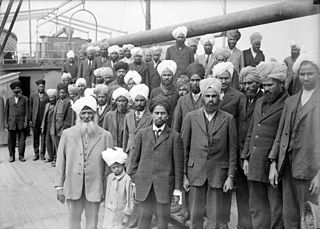
Stereotypes of South Asians are broadly believed impressions about individuals of South Asian origin that are often inconsistent with reality. While the impressions are wrongly presumed to be universally true for all people of South Asian origin, these stereotypes adversely affect the South Asians as well as the acculturation process.
Brown is a racialized classification of people, usually a political and skin color-based category for specific populations with a light to moderate brown complexion.
Panethnicity is a political neologism used to group various ethnic groups together based on their related cultural origins; geographic, linguistic, religious, or 'racial' similarities are often used alone or in combination to draw panethnic boundaries. The term panethnic was used extensively during mid-twentieth century anti-colonial/national liberation movements. In the United States, Yen Le Espiritu popularized the term and coined the nominal term panethnicity in reference to Asian Americans, a racial category composed of disparate peoples having in common only their origin in the continent of Asia.
In gay slang, queen is a term used to refer to a flamboyant or effeminate gay man. The term can either be pejorative or celebrated as a type of self-identification.
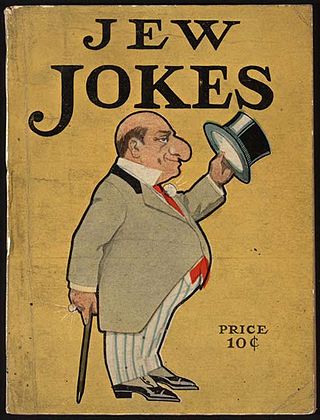
Stereotypes of Jews are generalized representations of Jews, often caricatured and of a prejudiced and antisemitic nature.
Hispanic and Latino are ethnonyms used to refer collectively to the inhabitants of the United States who are of Spanish or Latin American ancestry. While the terms are sometimes used interchangeably, for example, by the United States Census Bureau, Hispanic includes people with ancestry from Spain and Latin American Spanish-speaking countries, while Latino includes people from Latin American countries that were formerly colonized by Spain and Portugal.
Racism is a concern for many in the Western lesbian, gay, bisexual and transgender (LGBT) communities, with members of racial, ethnic, and national minorities reporting having faced discrimination from other LGBT people.
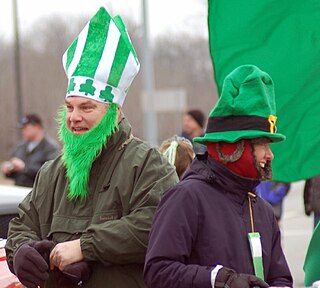
In sociology, symbolic ethnicity is a nostalgic allegiance to, love for, and pride in a cultural tradition that can be felt and lived without having to be incorporated to the person's everyday behavior; as such, a symbolic ethnic identity usually is composed of images from mass communications media.

A cholo or chola is a member of a Chicano and Latino subculture or lifestyle associated with a particular set of dress, behavior, and worldview which originated in Los Angeles. A veterano or veterana is an older member of the same subculture. Other terms referring to male members of the subculture may include vato and vato loco. Cholo was first reclaimed by Chicano youth in the 1960s and emerged as a popular identification in the late 1970s. The subculture has historical roots in the Pachuco subculture, but today is largely equated with anti-social behavior, criminal behavior and gang activity.











